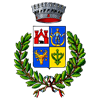The Carnival of Roisan represents a lively plunge into the traditions of the Coumba Freide, an area in the Aosta Valley known for its windy winters, especially around the Gran San Bernardo valley. This festival has its roots in the post-war period, specifically in the 1950s, with the creation of the Landzette group, the characteristic masks of the place, originally obtained second-hand from nearby locations like Bosses, Saint Oyen, and Etroubles.
For a long time, the masks of Roisan were nicknamed "patoille", worn with ragged clothes and faces hidden by masks or blackened with soot. In 1986, the group "La Reysaentse" was born, which, while preserving the unique essence of the Carnival of Roisan, reconnected it to the broader tradition of the Coumba Freide.
One of the distinctive aspects of the Carnival of Roisan is the dramatization of the passage of Napoleon's troops through the Gran San Bernardo. The "Benda", the heart of the celebration, was initially formed by 22 Landzettes, a guide, two harlequins, two bears with their tamer, and two characters called lo Toc and la Tocca, representing old age and the end of winter, in stark contrast to the damsels, symbols of life, rebirth, and the announcement of spring.
During the Carnival, the families of Roisan open the doors of their homes to the masks, offering hospitality with food and drinks in exchange for music, dances, and moments of joy. The celebration concludes on Tuesday evening. The costumes, playfully inspired by the uniforms of Napoleon's soldiers, are richly colored and adorned with flowers, ribbons, mirrors, and bells.
In conclusion, the Carnival of Roisan is an opportunity to celebrate the rich history and local traditions, creating a bridge between the past and present in a festive atmosphere that warmly welcomes both community members and visitors.
Address
- Roisan
- Roisan Roisan AO
- Find on the map.














